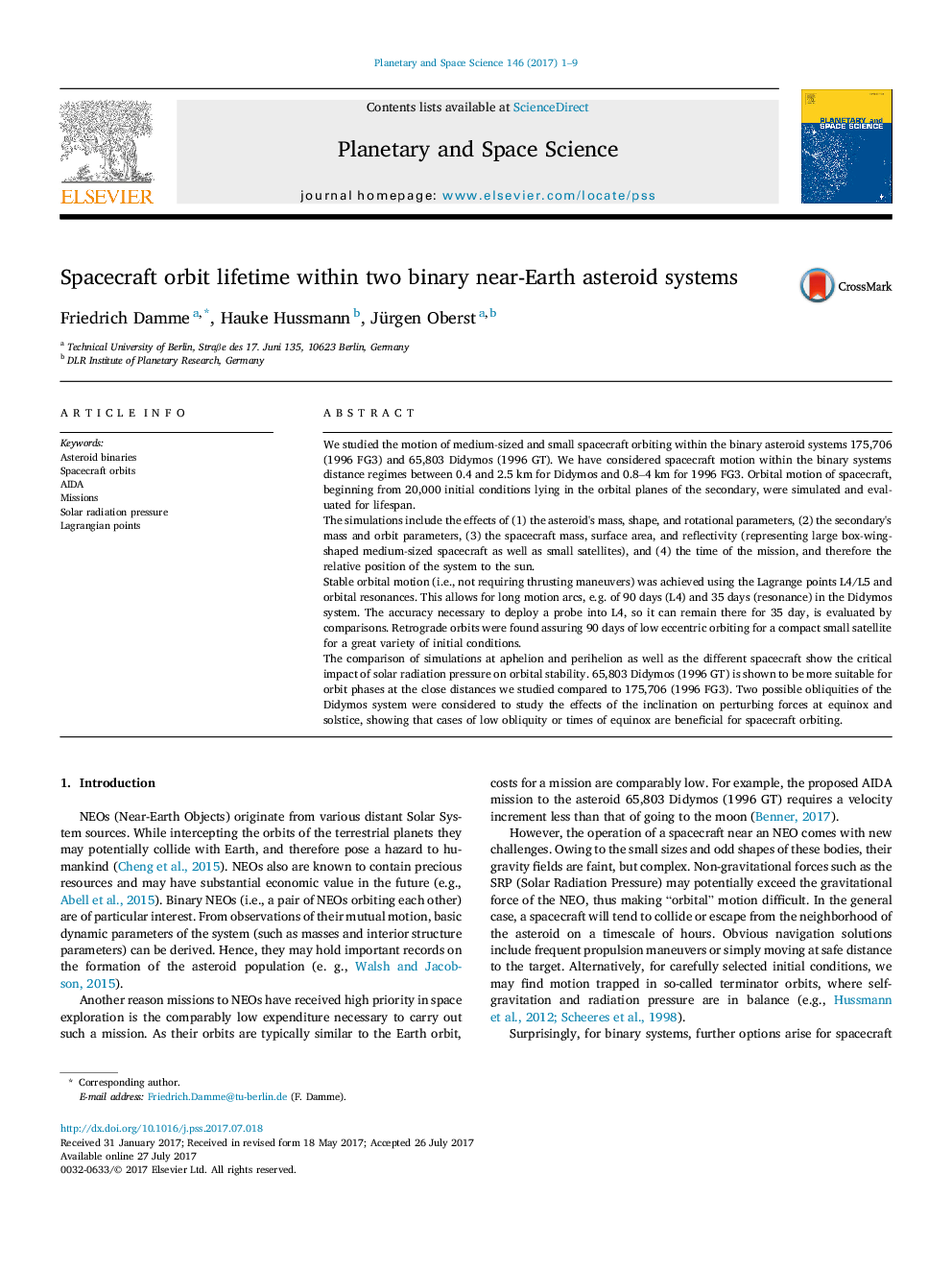| Article ID | Journal | Published Year | Pages | File Type |
|---|---|---|---|---|
| 5487921 | Planetary and Space Science | 2017 | 9 Pages |
â¢Orbital lifetime of spacecraft and CubeSats near asteroid binaries Didymos and 1996FG3.â¢Motion without maneuvers exceeding 90 days achievable near L4 or retrograde to Moonlet.â¢Evaluation of accuracies necessary for deployment near L4 in the Didymos system.â¢Long arcs over 35 days possible in resonant orbits in the Didymos system.â¢Seasonal effects can be considered for optimization of orbital life-time.
We studied the motion of medium-sized and small spacecraft orbiting within the binary asteroid systems 175,706 (1996 FG3) and 65,803 Didymos (1996Â GT). We have considered spacecraft motion within the binary systems distance regimes between 0.4 and 2.5Â km for Didymos and 0.8-4Â km for 1996 FG3. Orbital motion of spacecraft, beginning from 20,000 initial conditions lying in the orbital planes of the secondary, were simulated and evaluated for lifespan.The simulations include the effects of (1) the asteroid's mass, shape, and rotational parameters, (2) the secondary's mass and orbit parameters, (3) the spacecraft mass, surface area, and reflectivity (representing large box-wing-shaped medium-sized spacecraft as well as small satellites), and (4) the time of the mission, and therefore the relative position of the system to the sun.Stable orbital motion (i.e., not requiring thrusting maneuvers) was achieved using the Lagrange points L4/L5 and orbital resonances. This allows for long motion arcs, e.g. of 90 days (L4) and 35 days (resonance) in the Didymos system. The accuracy necessary to deploy a probe into L4, so it can remain there for 35 day, is evaluated by comparisons. Retrograde orbits were found assuring 90 days of low eccentric orbiting for a compact small satellite for a great variety of initial conditions.The comparison of simulations at aphelion and perihelion as well as the different spacecraft show the critical impact of solar radiation pressure on orbital stability. 65,803 Didymos (1996Â GT) is shown to be more suitable for orbit phases at the close distances we studied compared to 175,706 (1996 FG3). Two possible obliquities of the Didymos system were considered to study the effects of the inclination on perturbing forces at equinox and solstice, showing that cases of low obliquity or times of equinox are beneficial for spacecraft orbiting.
